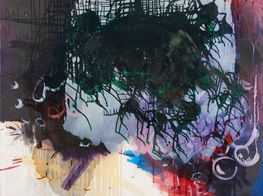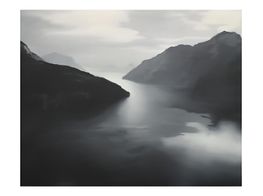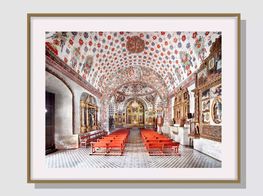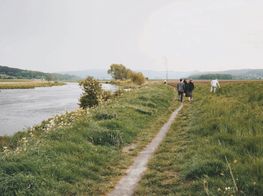Beat Wismer
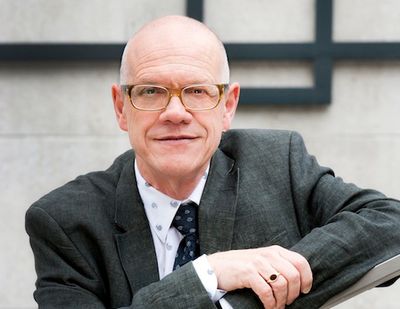
Beat Wismer, the General Director of the Stiftung Museum Kunstpalast in Düsseldorf, took charge of what he describes as a "living art museum with a highly varied cross-cultural collection" in 2007.
The museum's repository includes the Düsseldorf Art Academy's art collection, late-medieval sculpture, Dutch and Flemish painting of the sixteenth to eighteenth centuries and European painting from the Romantic period to Impressionism, with a focus on the Düsseldorf School of Painting. It also includes works by the German Expressionists and the ZERO Group, and traces a varied scene orbiting around the city in the postwar years, when Richter, Lueg, Kuttner and Polke formulated Capitalist Realism as students at the Academy.
Its incredible collection reflects general art history, often revealing a strong connection with the city of Düsseldorf. The collection goes back to the one founded by Elector Palatine Johann Wilhelm ('Jan Wellem') and his wife Anna Maria Luisa de' Medici in the eighteenth century.
In this interview, Wismer talks about working with this historical institution, located in a city that was once the administrative seat of the Republic of North Rhine-Westphalia, and which has always been a creative hub, thanks in large part to the Düsseldorf Art Academy, established in 1773.
Joseph Beuys, Nam June Paik and today Rosemarie Trockel and Tony Cragg are but a few of the many who have passed through the Kunstakademie's doors, barely a ten-minute walk from the Museum Kunstpalast, built according to the plans of architect Wilhelm Kreis for an exhibition of health, social care and sports (the GeSoLei) in 1926.
I was really fascinated by the idea of the Museum Kunstpalast and the different branches of the collection.
SBYou have called Museum Kunstpalast "five museums under one roof," with a sprawling group of collections dating from antiquity to the present day. It must be a challenge to manage a collection as vast as this.
BWThis is one part of the reason I'm here. I was really fascinated by the idea of the Museum Kunstpalast and the different branches of the collection. But another reason I'm here is the art scene, which I've known since the seventies.
Back then it was always about travelling around the region, if we came to Düsseldorf, we would go to Cologne to see a show, and visit Eindhoven and Duisburg, for example. It was a real region, the Rhineland; the art scene extended beyond just Düsseldorf.
SBThere still seems to be a kind of "LA mentality" here in the Rhineland. People do take two-hour train rides from Cologne to Essen to attend an opening. For example it took me an hour to get to Essen, which was worth it after having seen the incredible nineteenth century former coal mine and industrial zone, Zeche Carl. Thinking about Dusseldorf's geographical position on the Blue Banana, (an economic zone that stretches from North Italy to the UK), I wanted to talk about this museum being one of the first public-private partnerships in Germany (PPP), launched in 1998.
BWThere were always problems with this museum and its architecture—like today, it was often closed or partly closed due to reconstruction work. In the nineties, there was a fire, which made fundamental redevelopment measures even more urgent. But in the nineties there were also serious financial problems with the museum. This was the situation from which the PPP arose. The City of Düsseldorf and E.ON—which was not called E.ON at the time though—designed this partnership after the American model.
Photography—a medium that's closely associated with Düsseldorf—became even more important to the collection.
SBWhen you became General Director in 2007, what did they ask of you?
BWWhen I arrived, the partnership had changed. We had two contracts: one was for the whole museum, for the elementary costs, logistics, and so on, and the second was for exhibitions. The exhibitions part of the contract ended, so since 2007, we have had to look for additional sponsors. But then again, let's not forget, a museum is not about special exhibitions in the first place, it is about its collection.
So when I started, I said: we have to work with the collection of the museum and also the Düsseldorf and Rhineland scene. The first exhibition we did paired glass with visual art, since we have one of the leading glass museums in the world. And in the past years, we have also strongly developed certain parts of the collection.
We have built up AFORK for example, this huge collection of photography of the history of the Rhineland art scene, from the Fluxus presence, to the exhibitions of Gerhard Richter and Konrad Lueg in 1963, which marked the beginning of Pop art in Düsseldorf. So photography—a medium that's closely associated with Düsseldorf—became even more important to the collection. But we don't have an ambition to build a collection of the history of photography. Our photography collection starts when photography came into the museum, so for us, it starts with the Bechers.
SBOf course, the Bechers were the founders of the Düsseldorf School of Photography in the sixties and seventies; teachers of Thomas Struth, Thomas Ruff, Candida Höfer (exhibiting at the museum from 14 September to 9 February). Andreas Gursky was also a student—he had a survey exhibition here in 2013. It seems the Museum Kunstpalast's exhibitions are very much about the context of the art scene in Düsseldorf and its connection with the Kunstakademie. You just exhibited the collection of drawings and prints of Kunstakademie founder Lambert Krahe, used as study aids in the Academy (13 April–4 August 2013).
BWThis could give the impression that we have a local focus, which is fine, but the fascinating point is this, you can work here locally but there is always a network to the international art scene. Even in the hightime of the Düsseldorf School of Painting, you had students from all over. Then there was the economic aspect—art dealing in Germany started in Düsseldorf in the fifties. You had Alfred Schmela with Pop art, Konrad Fischer with Minimal art and Arte Povera.
Düsseldorf-based gallerist Hans Mayer organized the first Warhol show in Germany. So, you have very international ambitions that are always somehow anchored. Take our El Greco show, El Greco and Modernism (28 April–12 August 2012). After El Greco was shown in Munich in 1911, he was exhibited in Dusseldorf as early as 1912, which means the young artists from the Rhineland could discover him here.
Jan Wellem pushed the development of this city and its culture. From the beginning, his collection was one of the leading European collections and what is so special is how it was built up in Düsseldorf, along with the city.
SBHas art always played a central role in Düsseldorf's development?
BWDüsseldorf really became a city with Jan Wellem. It started in the eighteenth century! Jan Wellem pushed the development of this city and its culture. From the beginning, his collection was one of the leading European collections and what is so special is how it was built up in Düsseldorf, along with the city.
Parts of his collection are still here and form the historic basis of the museum. A decisive impulse in the nineteenth century was the success of the Düsseldorf School of Painting. From its founding in 1848, the Malkasten ('Paintbox Artist's Association") was the centre of a scene that developed around the Academy. Also in 1919, you had Johanna Ey, a baker who was one of the first gallerists in the city— Otto Dix paid her with drawings and numerous artists paid homage to her by painting her portrait. They called her Mother Ey—she was really very popular.
Then there was Alfred Flechtheim, a really big Jewish art dealer in the 1920s who also had an impressive modern art collection himself. He opened his first gallery in Düsseldorf in 1913. But he had to emigrate after 1933, and his gallery was taken over by his employee Alex Vömel. Flechtheim had wanted to sell international artworks to the museum, but, regrettably enough, they hardly bought French art!
Unfortunately, many of the works that came into the museum from Flechtheim were either exchanged, sold or confiscated under the Nazis. And many more had the same fate! But when the war ended, my predecessors rebuilt the collection as quickly as possible: They knew what had been lost.
SBAnd today, Museum Kunstpalast can really map these connections out through its vast and historical collections...
BWExactly, and we have even more possibilities. Yesterday, we were discussing what kind of exhibitions we could produce from the collection and I always use this as my example.
We could even do an exhibition about razors! It would also be possible to curate a design exhibition together with the motifs of Konrad Klapheck (whose work was exhibited at the museum from 26 April to 4 August 2013); motifs like typewriters, for instance. My colleague from the design department said we could even do a presentation of doors. I thought, yes; we have Baroque doors, we could do it!
We also have good arguments for Japanese exhibitions, not only because Düsseldorf has the biggest Japanese community in continental Europe, but also because we have thousands of netsuke, these finely and often figuratively carved Kimono broach buckles, as well as our print collection. There are so many themes. —[O]__









